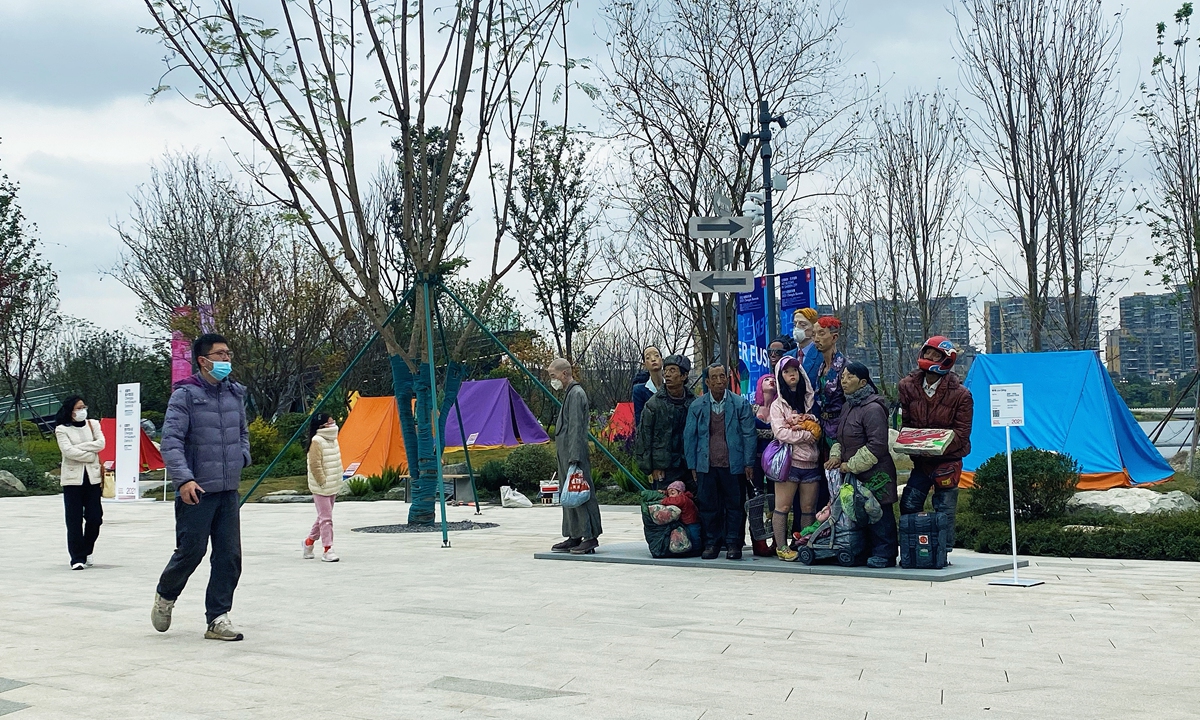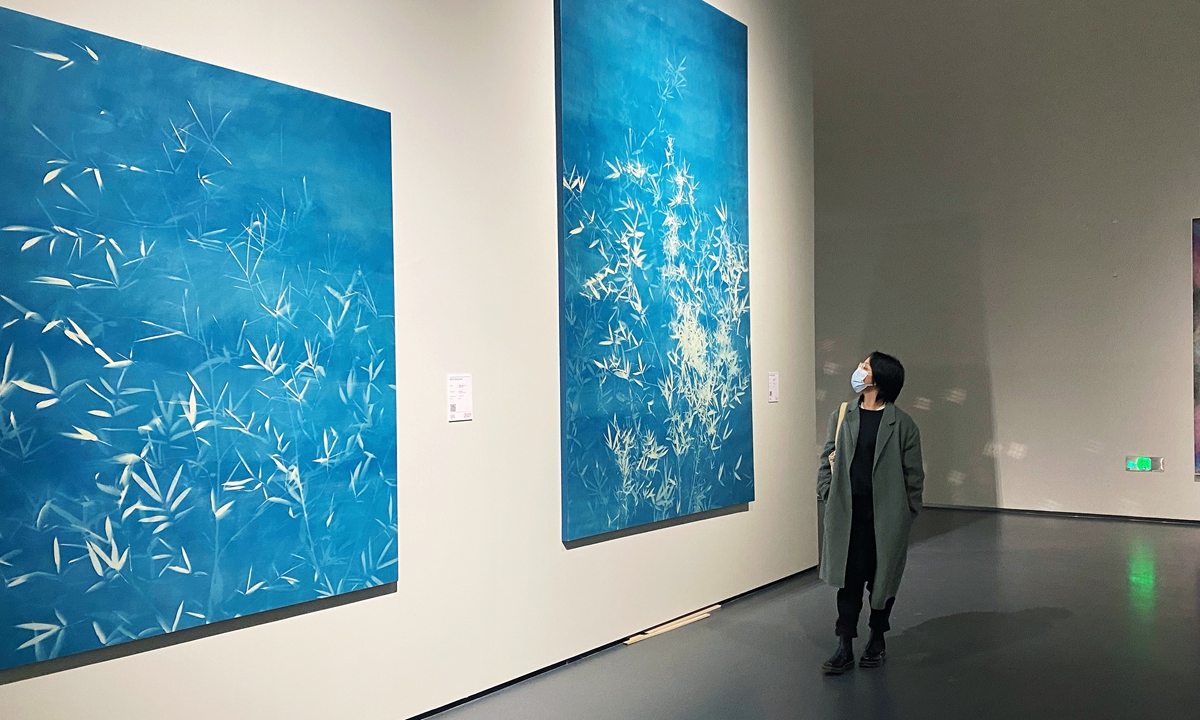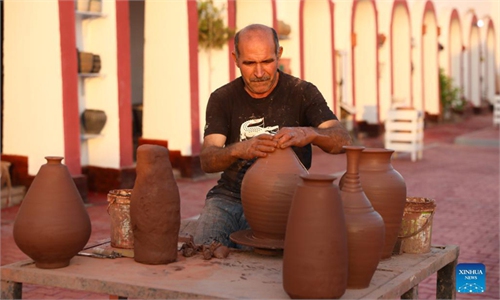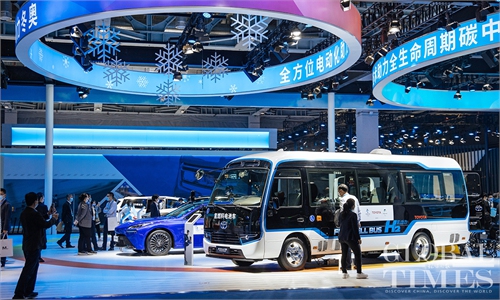ARTS / ART
Chengdu Biennale sees fusion of traditional and contemporary art in Southwest China’s Sichuan

The sculpture at the Chengdu Biennale in Chengdu, Sichuan Province Photo: Courtesy of Xiao Min

A visitor explores the paintings at the Chengdu Biennale in Chengdu, Sichuan Province. Photo: Courtesy of Xiao Min
The ongoing Chengdu Biennale is displaying hundreds of artworks across eight themed sections and 17 parallel exhibitions at the Chengdu Museum in Southwest China's Sichuan Province.The 506 artworks from 272 artists from home and abroad include paintings, sculptures, installation works, videos and digital media.
"I hope this biennale can become a home of visual culture that the people like. Visitors can see the development trend of global art integration in the exhibitions, appreciate the artistic creations formed by a group of well-known artists from home and abroad using different forms, materials and methods, gain a variety of aesthetic feelings and understand the value of artistic innovation in promoting social innovation," said Fan Di'an, curator of the Chengdu Biennale and also president of China's Central Academy of Fine Arts.
The biennale marks the debut of the newly built Chengdu Museum, which is made up of two spaces.
"These two new spaces will not only become important cultural public places in Chengdu, but will also provide a lasting driving force for Chengdu's artistic prosperity in the future," said He Hongying from the Chengdu Museum.
Fan said that when starting out, the curators were thinking about "how to make the Chengdu Biennale a large-scale exhibition that brings warmth and confidence as we are still amid the COVID-19 pandemic."
The fusion is not only just about the innovative exploration of contemporary and traditional arts, but also reflects China's concept of building a community with a shared future of mankind through mutual learning from other civilizations and through cultural exchanges.
The parallel exhibitions across the city are aiming at young artists and curators.
Additionally, the biennale will also host a summit for curators from nearly 30 museums around the country to tackle the relationship among three key elements: collections, the audience and exhibitions.



